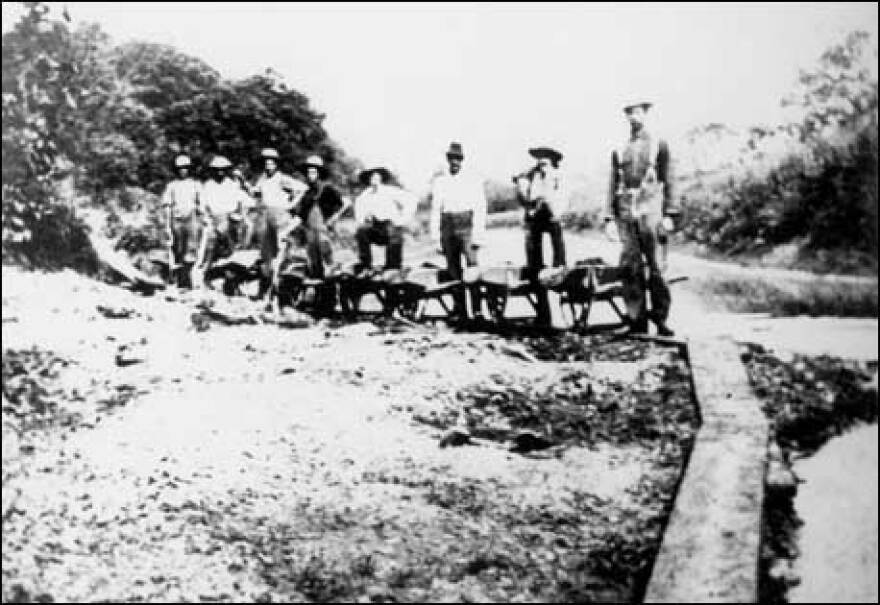By the Staff of the Indiana Magazine of History
Archive: September 30, 2013
In July 1835, rumors began circulating among construction supervisors along the route of the Wabash and Erie Canal. On a section being dug near Lagro, Indiana, just east of the town of Wabash, the Irishmen working on the canal were said to be preparing for a fight.
The workers were divided into two groups, based upon their region of origin in their homeland, and the so-called Corkonians and Fardowns, who had already engaged in fisticuffs and skirmishes, were apparently planning a battle which would involve about 300 men on each side of the conflict. The state’s canal commissioner, David Burr, used a brief period of truce to call up local militias—as fighting broke out, enough men were arrested to deter the remainder of the combatants.
Battles among Irish canal and railroad workers in the 1830s and onward were common enough that they became the stuff of local legends. Fighting was usually explained by calling upon ethnic stereotypes of heavy-drinking, hot-headed Irishmen. Even later historians came up with the fairly traditional explanation that the fights mirrored Protestant/Catholic violence in Ireland. But a closer look reveals a deeper meaning behind the clashes.
Many of the canals and railroads in Indiana and other states were built by Irish transient laborers, mostly single men in their 20s and 30s who had emigrated for a chance to escape the poverty of rural Ireland. They brought with them, among other things, the tradition of secret societies, popular among the rural poor, who banded together to try to protect their economic interests against landlords and men from outside the region looking for local work.
When this practice was translated onto American soil, Irish canal workers tried to ensure that as many of their “own” men as possible were hired onto a work crew. As construction projects grew larger and more workers were hired, it was inevitable that sites had workers from more than one part of Ireland; when that occurred, some level of conflict usually broke out during the building process. For example, fights broke out between Irish workers along the Madison and Indianapolis Railroad in 1837 and among workers on Indiana’s Central Canal during the same year, for the purpose, as one historian has put it, of trying to assure “access to jobs through control of the workplace.”
If history cannot avoid this dark side to the story of the 19th century’s transportation revolution, we can try to understand the economic motivations of the hardworking men who built so many of the canals and railroads of the United States.
Source: Jay Perry, “The Irish Wars: Laborer Feuds on Indiana’s Canals and Railroads in the 1830s,” Indiana Magazine of History 109 (September 2013)



